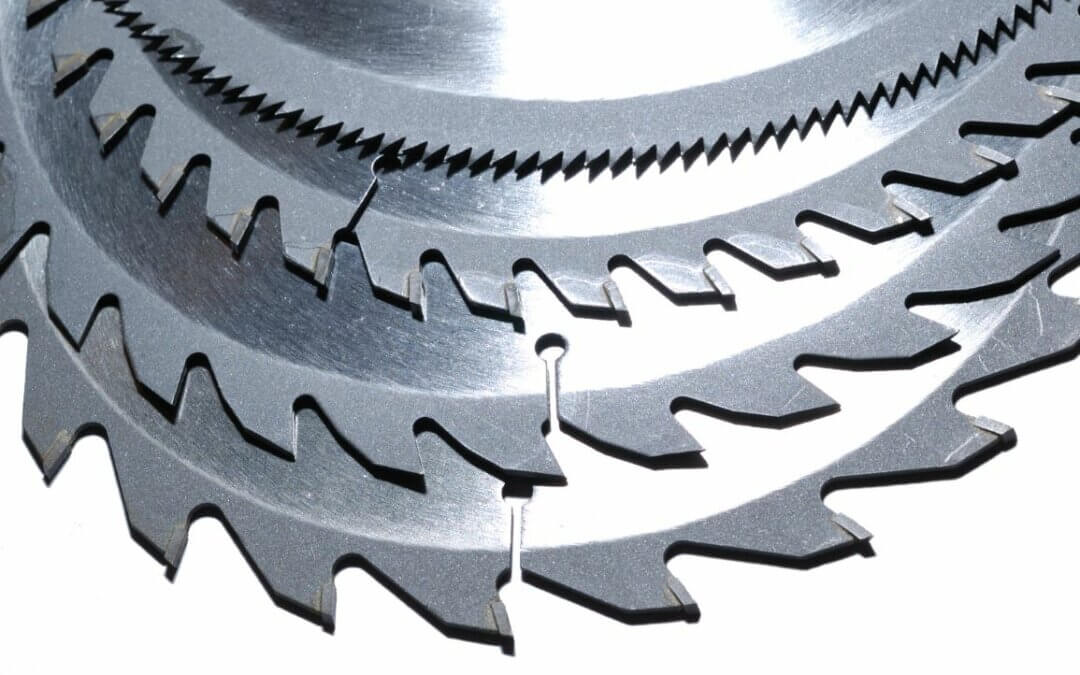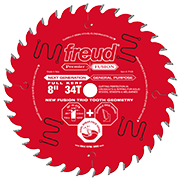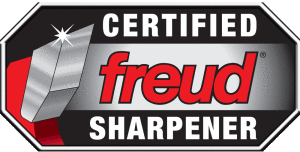Carbide saw blades are indispensable tools in wood and metal industries, offering precision, efficiency, and durability in cutting tasks. These blades come in a variety of types, each tailored to specific applications based on factors like tooth count, blade diameter, and tooth geometry. It’s important to understand the various types of carbide saw blades and the factors to consider when choosing the right one for your needs.
Rip Blades
Rip blades are characterized by fewer teeth and a high tooth count per inch (TPI). They are designed for cutting with the grain of the material, making them ideal for ripping lumber or other wood products. Most ripping blades have a flat-top grind (FTG) which helps to reduce deflection or kick back. These blades excel at tasks such as cutting boards to width, ripping large panels, or transforming rough lumber into more manageable pieces. Their specialized configuration ensures clean and precise cuts, reducing the need for additional sanding or finishing work. With their aggressive tooth design and large gullets, rip blades excel at fast, efficient cutting, making them one of the leading blades in woodworking and lumber industries.
Crosscut Blades
In contrast to rip blades, crosscut blades feature a higher tooth count and a finer tooth design. These blades are optimized for cutting across the grain of the material, producing clean, smooth cuts with minimal tear-out. Their fine teeth reduce the need for extensive sanding or finishing work. Crosscut blades are commonly used in woodworking for tasks such as cutting plywood, hardwood flooring, trim pieces, and laminates. When cutting plywood, a crosscut blade with a high alternate top bevel (ATB) is best for reducing the amount of chipping, while more brittle materials such as laminates require a triple chip grind (TCG) with a negative hook angle for no chipping and smoother cuts.
Combination Blades
Combination blades offer the versatility of both rip and crosscut functions in a single blade. These blades typically feature a tooth geometry of alternate top bevel and flat top grind (ATB + FTG) alternating groups of rip and crosscut teeth, allowing them to be incorporated in a variety of cutting tasks. Combining the benefits of rip and crosscut blades, these versatile blades reduce the need for frequent blade changes, making them very popular among DIY enthusiasts and contractors who require flexibility without sacrificing performance. Combination blades are a practical choice for woodworkers of all levels.
Fine Finish Blades
Fine finish blades, also known as trim blades or finishing blades, are designed for precision cutting tasks that require exceptionally smooth edges. These blades feature a high tooth count as well as a high alternate top bevel (ATB) tooth geometry design optimized for clean, chip-free cuts. Fine finish blades are commonly used in industries such as cabinetry, furniture making, and trim carpentry, where flawless finish quality is important.
Metal-Cutting Blades
Carbide saw blades aren’t limited to wood cutting; there are also specialized blades designed for cutting metal materials. Metal-cutting blades have a different tooth design and tooth count compared to wood-cutting blades to accommodate the unique properties of metals. Their tooth geometry uses the triple-chip grind (TCG) technology great for “ploughing through” when cutting abrasive materials. These blades are commonly used in industries such as metal fabrication, construction, and automotive manufacturing for cutting steel, aluminum, and other metals with precision and efficiency.
Factors to Consider
When selecting a carbide saw blade for a specific application, several factors should be considered such as tooth count, blade diameter and tooth geometry.
Tooth count: Higher tooth counts result in smoother cuts but may decrease cutting speed. Lower tooth counts are better suited for fast, aggressive cutting.
Blade diameter: The diameter of the blade determines the depth of cut and must be matched to the size of the cutting task.
Tooth geometry: Different tooth geometry, such as alternate top bevel (ATB), triple-chip grind (TCG), or flat-top grind (FTG), are optimized for specific materials and cutting applications.
Alternate Top Bevel (ATB) – This tooth design is beveled on the top, with every other tooth being beveled in the opposite direction of the adjacent teeth. Best suited for natural wood and plywood.
Triple-Chip Grind (TCG) – This design uses two different types of teeth that alternate. The first tooth type is a standard flat top grind that alternates with a modified flat top grind with chamfered corners. Best suited for particle board, melamine, and metal.
Flat-Top Grind (FTG) – This blade design has a flat top tooth geometry designed for making aggressive cuts most used with ripping blades. Ideal for making fast cuts going with the grain in solid woods.
We Know Carbide Saw Blades!
Carbide saw blades offer a wide range of options to meet the diverse cutting needs in the metal and woodworking industries. At Byler Industrial tool, we can help you choose the right carbide saw blade necessary for achieving optimal cutting results based on your industry and specific applications. Whether it’s ripping lumber, cross cutting plywood, achieving fine finishes, or cutting metals, there’s a carbide saw blade designed to deliver optimal performance. We also provide quality sharpening services when your carbide saw blades become dull. Investing in the right carbide saw blade will not only enhance the quality and efficiency of your cutting operations but also prolong the life of your equipment and improve overall productivity. Shop our online store!




